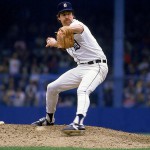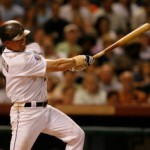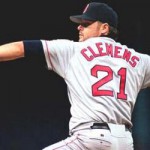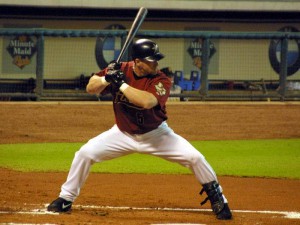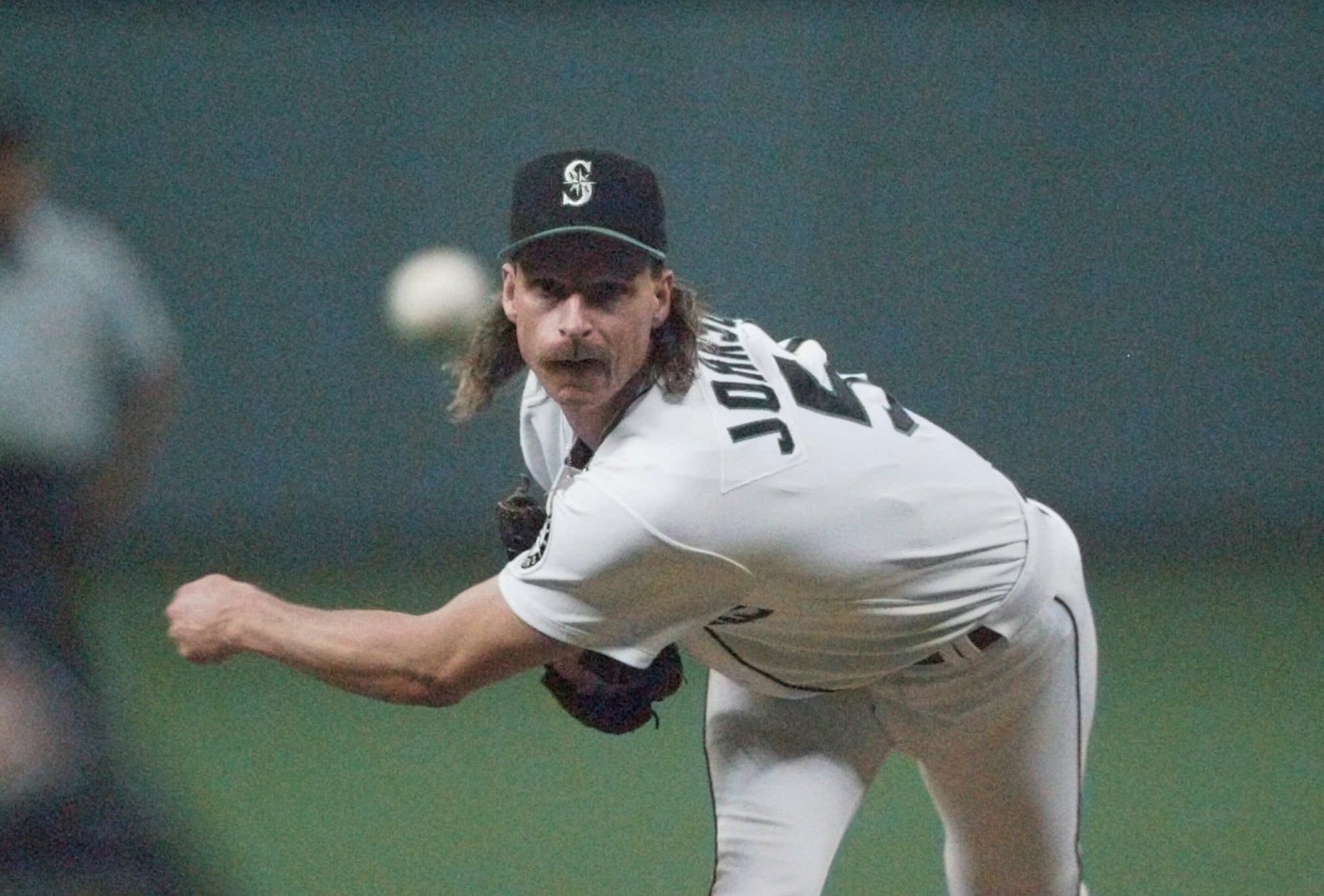
Randy Johnson leads the 2015 hall of fame ballot. Photo (AP Photo/ Elaine Thompson) via seattlepi.com
Last year’s version of this post is here; it has links to prior years where I went into my general thought process on yes/no votes per individual player. I’ve tired of writing the same 2,000 word post on the topic since everyone else on the internet is, so this is a bit shorter of a HoF post. And it won’t insult me if you don’t respond or even read this post; there’s far, far too much hall of fame arguing going on in the baseball blogosphere, and i’m no more or less qualified to publish an opinion on this ballot than many of the official BBWAA writers at this point.
The 2015 ballot at baseball-reference.com is here. Once again there’s too many deserving players for not enough spots.
For me, there’s three no-brainer 1st ballot hall-of-famers new to the 2015 ballot: Randy Johnson, Pedro Martinez and John Smoltz. The first two should be unanimous but of course they won’t. In fact, we already have a published ballot of someone who left both off so he could vote for others who “needed the votes.” Smoltz might be borderline for some but for me he’s better than other hurlers recently enshrined; somehow I doubt he gets in this time around.
Of the carry overs from last year’s ballot, I’d vote as follows:
- Yes for Biggio, Piazza, Bagwell, Raines, Clemens, Bonds, Schilling, Martinez, McGwire
- Maybe later for Trammell, Mussina, Kent, and Sheffield.
- No for Smith, McGriff, Walker, Mattingly, Sosa and anyone else new to the ballot this year not otherwise mentioned. Why are these No votes? See 2012 and 2013′s links for my reasoning on the names here, all of whom are repeats.
Of course, this is too many “Yes” votes. If I had to cut two of my 12 Yes votes, I’d guess Martinez and McGwire are the first two to go. Or maybe Schilling. Which is a shame because I think all the guys in the “maybe later” have legitimate cases too. But this is the bed that the BBWAA has made for itself with its arbitrary player limit and its wishy-washy stance on alleged PED users.
2015 voting Prediction: Johnson, Martinez and Biggio elected. Smoltz just misses, and Piazza & Bagwell get close enough that they’ll go in with the 2016 class (which only has one no-brainer candidate in Ken Griffey, Jr). Still no love for Bagwell, the PED brothers, or Raines, much to the chagrin of the sabr-crowd.
1/6/15 update: My prediction was too conservative: Johnson, Martinez, Smoltz and Biggio inducted in 2015. Piazza got 69% of the vote and seems like a good bet for 2016. however Bagwell and Raines lagged seriously behind, at just 55% of the vote each. Another huge gap after that leads to a trio of players in the mid 30s … not nearly enough to talk about them getting in next year.
